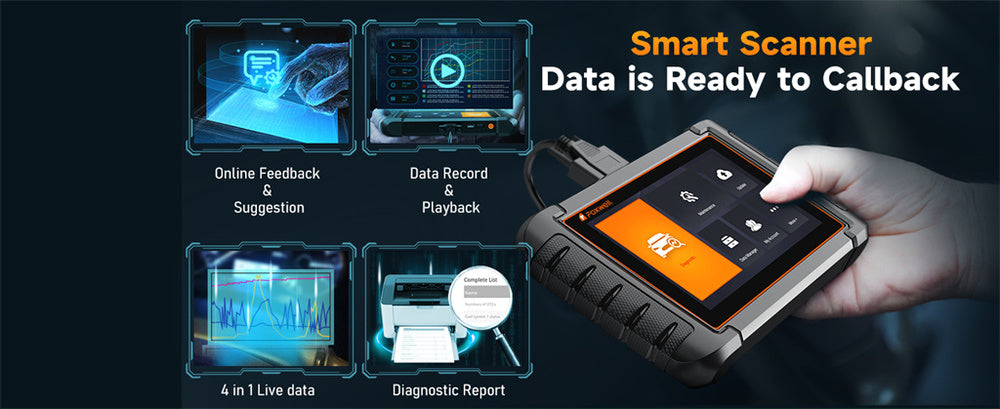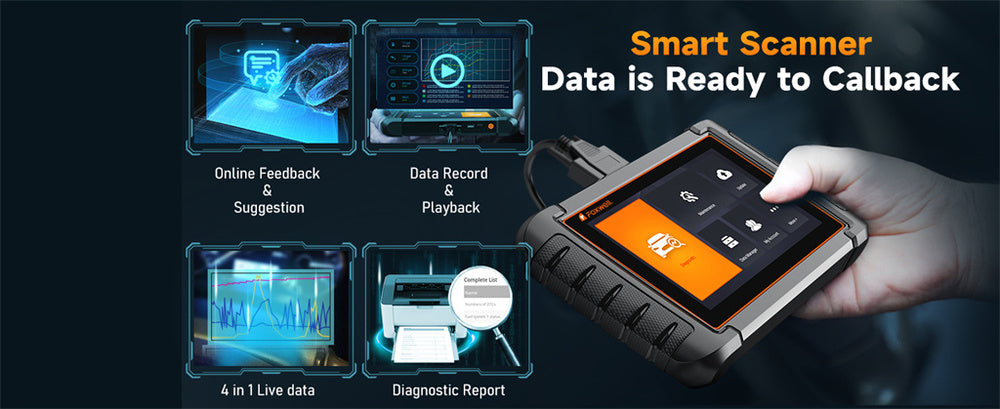You can assess the condition of your battery. Detect system shorts with the help of an OBD2 scanner. The Foxwell NT809, for instance is a tool that enables you to keep track of your car batterys voltage pinpoint potential charging issues and uncover system shorts by interpreting error codes.
We'll walk you through the process of utilizing an OBD2 scanner to evaluate your cars battery health and pinpoint any concerns. We'll discuss the fundamentals of battery health utilizing an OBD2 scanner, common battery related problems, troubleshooting and resolving battery issues as professional testing alternatives.
Understanding Battery Health Fundamentals

A functioning car battery is essential for ensuring that your vehicle starts reliably and that all electrical features like lights, radio and climate control work smoothly. Picture yourself stepping into your car on a winter day only to discover it won't start because the battery lacks the power to crank up the engine. This frustrating scenario can often be prevented through checks, on the state of your battery.
Common indications of a battery include an engine start, where the engine takes longer, than usual to kick in headlights appearing dimmer than expected and various electrical problems like slow moving power windows or unexpected infotainment system resets. Repeated jump starts also serve as a sign that the battery might be reaching the end of its lifespan.
For instance if you find yourself needing a jump start every week it's an indication that its time to have the battery checked and possibly replaced. To prevent these issues its recommended to test your battery every six months before embarking on journeys or whenever you observe any signs of deterioration. Regular testing can help detect issues on and ensure that your vehicle remains reliable.
Using an OBD2 Scanner to Assess Battery Condition
Checking your cars battery health with an OBD2 scanner is quite simple. Initially you'll need to locate the OBD2 port in your vehicle typically situated under the dashboard, near the steering wheel. Once you find it insert your OBD2 scanner. One praised option is the Foxwell NT809 model which provides features making this process convenient.
After connecting the scanner switch on your cars ignition without starting the engine.
Start the scanner by powering it up. Follow the instructions displayed on the screen to navigate to the battery voltage section. The Foxwell NT809 is known for its user interface. Will walk you through each step. You should focus on two voltage readings. The resting voltage, measured with the engine off should ideally be, around 12.6 volts indicating a charged battery. Then check the voltage with the engine running; it should fall between 14 to 15 volts confirming that the alternator is effectively charging the battery.
Beyond reading voltage levels the Foxwell NT809 offers features like displaying live data and conducting system tests. This allows you to receive real time updates and gain an understanding of your batterys condition.
Moreover its bi directional capabilities enable you to perform functions such as cycling the ABS pump motor or controlling the fuel pump operation – tasks that can aid in diagnosing electrical system issues in your vehicle. Utilizing a scanner, like this streamlines the process of checking your batterys health making it quick and convenient while helping you detect problems before they become concerns.

Common Battery Problems
Low Battery Voltage
- Indicates a discharged or faulty battery.
- Parasitic drain (e.g., aftermarket stereo or light left on), aging battery, frequent short trips that don’t allow the alternator to fully recharge the battery.
Battery Overcharging
- Voltage exceeds 15 volts, causing excessive heat and electrolyte loss.
- Faulty alternator or defective voltage regulator.
Battery Undercharging
- Voltage below 14 volts while the engine is running, indicating improper charging.
- Worn-out alternator, loose or corroded connections, drive belt issues.
Corroded Battery Terminals
- White, ashy substance on the terminals creating resistance.
- Battery acid vapors reacting with metal terminals, often exacerbated by a leaking battery.
- Prevents proper charging and can cause starting issues.
Parasitic Drain
- Unintended electrical drains that slowly discharge the battery when the car is off.
- Common Culprits: Faulty wiring, aftermarket accessories, malfunctioning electrical components like lights or alarms.
- Detection: Use an ammeter to measure the current draw from the battery when everything is supposed to be off.
Temperature Effects
- Cold Weather: Slows down the battery’s chemical reactions, reducing its capacity and making it harder to start the engine.
- Hot Weather: Causes the battery fluid to evaporate, leading to internal damage and reduced lifespan.
Regularly maintaining and inspecting your vehicle using tools such, as an OBD2 scanner can help detect and address battery issues ensuring your car runs smoothly.
Troubleshooting and Fixing Battery Issues and Professional Testing Options
When encountering battery problems start by examining the connections for any corrosion. Clean any residue on the terminals with a wire brush. Ensure they are securely fastened. This simple step can often resolve charging issues. Then check the battery for any signs of damage like cracks or leaks.
A swollen battery case may indicate overcharging, necessitating a battery or an alternator check. Use a multimeter to measure the batterys voltage. A healthy battery should read around 12.6 volts when the car is off. If its significantly lower try charging it before testing. When the engine is running the voltage should be between 14 to 15 volts indicating alternator function.
If problems persist consider seeking assistance. Many auto parts stores provide battery testing and installation services using diagnostic equipment for accurate evaluations. For issues such, as parasitic drains consult a mechanic with specialized tools to diagnose and resolve the problem effectively. Regular maintenance checks and knowing when to seek expert help will ensure your vehicle remains dependable.

Conclusion
it's important to inspect your cars battery health and system to keep your vehicle running smoothly and prevent unexpected breakdowns. Utilizing an OBD2 scanner like the Foxwell NT809 can make this task easier by offering voltage readings and diagnostic functions.
By being aware of battery issues such, as voltage, overcharging, undercharging and parasitic drains you can take proactive measures to care for your battery and electrical system.
Simple troubleshooting steps like cleaning corroded terminals and checking for damage can often solve problems.
For issues seeking professional testing and diagnostics can provide a comprehensive evaluation and necessary repairs. Consistent maintenance coupled with assistance ensures that your vehicle stays reliable and secure, on the road.
FAQs
Can an OBD2 scanner check my car's battery health?
Yes, it can measure voltage and identify charging issues.
What to do if my OBD2 scanner shows low voltage?
Clean battery terminals, check connections, and charge the battery. Replace if it doesn’t hold a charge.
Signs of an electrical short in my car?
Blown fuses, burning smell, and flickering lights. Use an OBD2 scanner to diagnose.




Leave a comment
This site is protected by hCaptcha and the hCaptcha Privacy Policy and Terms of Service apply.